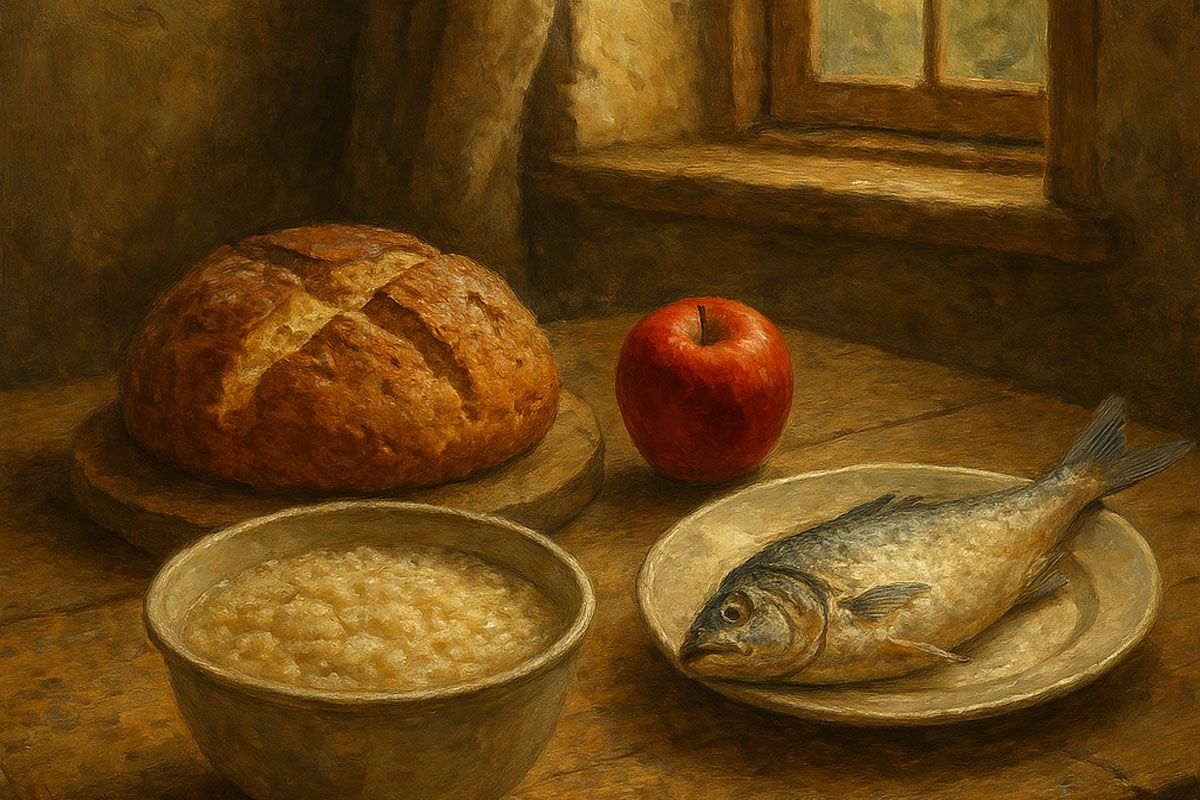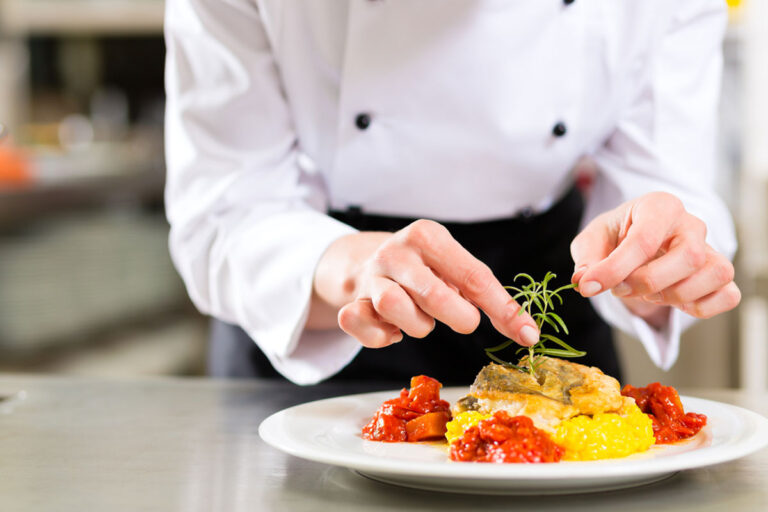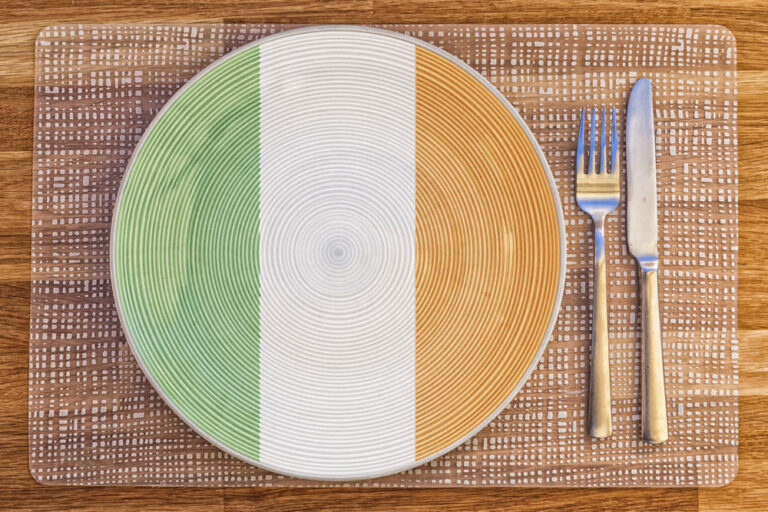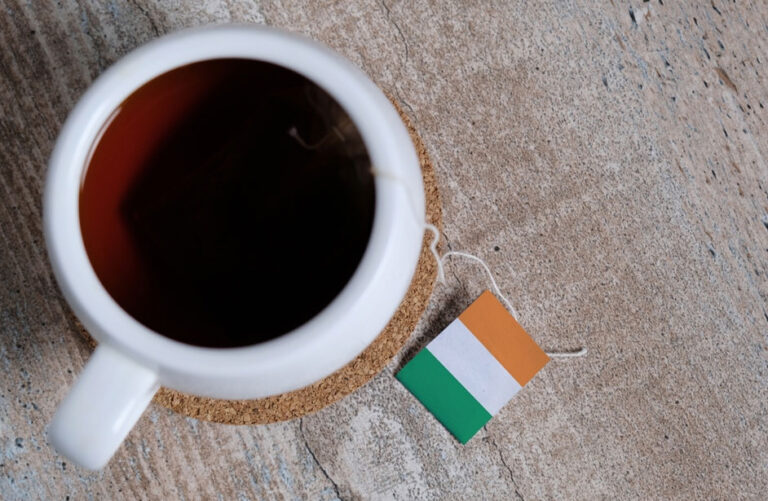The Roots of Food Superstitions in Irish Folklore
In the rich and layered tradition of Irish folklore, food has always carried meanings far beyond nourishment. In ancient Ireland, the line between daily life and the spiritual world was often blurred, and meals were believed to be closely tied to omens, blessings, and curses. Long before the era of supermarkets and processed goods, what people ate—and when, how, and with whom—was steeped in ritual and significance.
The Irish, like many Celtic peoples, lived in harmony with the rhythms of the earth, the seasons, and the spirits they believed dwelled in nature. Certain foods were believed to bring protection or luck, while others were avoided for fear of inviting misfortune. These beliefs were passed down orally through generations, embedded in seasonal festivals like Samhain and Imbolc, and often tied to the cycles of planting, harvesting, and family life.
For instance, breaking bread with a stranger was seen as an act of good faith and protection against bad luck, while spilling salt at the table was considered a serious omen—unless quickly countered by tossing a pinch over your left shoulder. These customs weren’t simply quaint habits; they were a way of safeguarding the household and inviting prosperity through everyday rituals.
As we explore the specific foods believed to bring fortune or folly in Irish folklore, we’ll also gain a window into the cultural values, fears, and hopes of generations past. From the significance of dairy to the omens hidden in fruit and bread, each bite tells a deeper story.
Blessed Bites – Foods That Invited Good Fortune
In Irish folklore, certain foods weren’t just nourishment—they were seen as blessings in disguise. These lucky foods were woven into seasonal rituals, family customs, and even courting practices, believed to bring protection, prosperity, and health to those who consumed them with respect and intention.
One of the most revered lucky foods in Irish tradition was butter. In rural Ireland, butter wasn’t just a staple; it was a symbol of abundance and the fruits of the family’s hard work. People would smear a bit of butter on the doorstep or bury a small lump near the hearth at Beltane (May Day) to attract good luck and a fertile season. It was also believed that offering butter to traveling faeries or passing beggars ensured continued blessings from both the natural and spiritual worlds.
Oats and oatcakes were also considered lucky, especially when eaten at the start of a journey or a new venture. Farmers and travelers might carry oatcakes for protection, and eating them before leaving home was thought to bring safe travels and favorable outcomes. Oats symbolized steadiness, warmth, and sustenance—everything needed to weather life’s uncertainties.
Eggs, too, were seen as fortunate, particularly when given as gifts. They represented new life and rebirth, and gifting eggs to neighbors—especially around Easter—was a way to strengthen community bonds and share blessings.
In addition to specific foods, sharing a meal was itself an act that drew luck. Offering food to guests, travelers, or even the poor was considered a sacred gesture. The Irish proverb “It is in the shelter of each other that the people live” was embodied in this tradition. Feeding others was not only an act of kindness but also a way to ensure that good fortune continued to flow through the household.
Even apple tarts held symbolic meaning—when baked with a small coin or charm inside (a precursor to today’s barmbrack custom at Halloween), the finder was said to be blessed with wealth, love, or luck, depending on the object discovered.
These customs weren’t arbitrary—they reflected a deep belief in the spiritual energy of the home and the idea that food, when respected and shared, was a conduit for good fortune.
Cursed Crumbs – Foods Believed to Bring Bad Luck
Just as some foods were revered for their power to bring luck, others were cautiously avoided or treated with suspicion in Irish folklore. These “unlucky” foods were believed to attract misfortune, illness, or even supernatural wrath if mishandled or consumed at the wrong time or in the wrong way.
One of the most widely feared practices was baking bread on a Sunday. While bread itself was a sacred and sustaining staple, making it on the Lord’s Day was thought to invite bad luck or even divine disapproval. Some believed the bread would fail to rise or turn out poorly, while others feared it would bring disharmony into the home. Sunday was a day of rest, and violating that sanctity with labor like baking was considered both disrespectful and ominous.
Spilled salt was another bad omen, mirroring a superstition found across many cultures. In Irish homes, spilling salt was thought to invite quarrels or misfortune, particularly if it occurred during a meal. The traditional remedy was to throw a pinch of the spilled salt over your left shoulder to blind the devil waiting behind you—an action meant to ward off the evil energy attracted by carelessness.
Leaving milk out overnight was also seen as risky. In some parts of Ireland, it was believed that faeries might take the milk—or worse, sour it—if it was not properly covered or protected. The milk of the household cow was a vital resource, and great care was taken to keep it “clean” of supernatural interference. Some households placed a sprig of rowan or a bit of iron nearby to ward off bad luck or faerie mischief.
Even eggs, while lucky in some contexts, could carry bad luck if misused. Breaking an egg and finding a double yolk was seen as an omen—sometimes of pregnancy or prosperity, but in darker traditions, it could foreshadow a death in the family, particularly if it happened unexpectedly or repeatedly.
Perhaps the most dramatic superstition surrounded throwing food away. In times when food was scarce and precious, wasting it wasn’t just impractical—it was considered spiritually dangerous. To discard bread, for example, without saying a blessing or apology could offend divine forces or household spirits. There was a belief that everything from the land should be treated with gratitude; disrespect could disturb the balance of luck and bounty.
These old beliefs reflect a world in which food was far more than fuel—it was a bridge between the natural and supernatural, and how it was handled could influence the household’s fate.
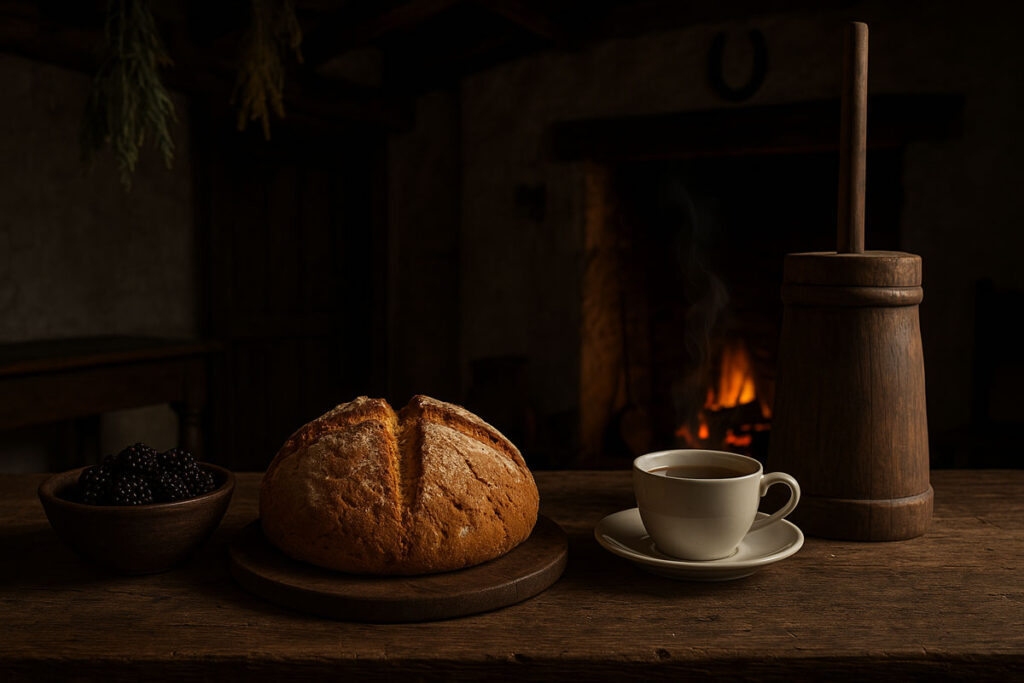
Feast Days and Fortune – Seasonal Foods and Superstitions
Ireland’s old calendar was marked by sacred days and seasonal festivals, many of which were deeply entwined with food traditions. These special times of year—rooted in Celtic custom and later layered with Christian practice—were believed to be liminal, when the boundaries between worlds were thinner, and what you ate (or didn’t eat) could have a powerful effect on your fate for the coming season.
Samhain, celebrated at the end of October, is perhaps the most well-known of these festivals. The ancient Celtic New Year, it marked the beginning of winter and the time when the dead could walk among the living. Foods prepared for Samhain were both protective and prophetic. Colcannon (a mashed potato dish with kale or cabbage) was often served, and small tokens—coins, rings, or thimbles—were hidden inside to tell fortunes. Finding a ring predicted marriage, a coin meant prosperity, and a thimble could signal a future of spinsterhood or a long wait for love. Though playful, these predictions were taken to heart and often spoken of for months afterward.
Imbolc, associated with the goddess Brigid and celebrated at the start of February, was a time of renewal and the hope of spring. Dairy foods were especially prominent at this time—butter, milk, and fresh cheeses were seen as signs of abundance and fertility. Giving or receiving butter during Imbolc was believed to bring luck in household affairs and agricultural productivity. In contrast, refusing or wasting dairy during this time was said to risk angering Brigid herself, who watched over homes, hearths, and livestock.
Beltaine, on May 1st, was a fire festival of fertility and protection. Foods cooked over flame—roasted meats, breads, and oatcakes—were eaten in rituals intended to bless livestock and crops for the summer. At Beltaine, sharing food was considered an act of spiritual generosity. Hoarding or refusing to partake in communal feasts could bring misfortune, while giving freely invited blessings.
Lughnasadh, in early August, celebrated the first harvest and was a time to give thanks for grain and bounty. Newly baked bread, made from the first sheaves of wheat, was symbolic of good luck and a fruitful season ahead. Eating the first fruits or loaves too soon—before the proper blessings had been given—was viewed as greedy and disrespectful to the land’s spirit, possibly leading to a poor harvest.
Seasonal foods were more than nourishment—they were offerings, omens, and anchors of ritual. Eating in rhythm with the calendar was thought to keep the home in harmony with nature, and ignoring those rhythms was a recipe for bad luck.
From Hearth to Habit – Echoes of Food Superstitions Today
Though the Ireland of today is modern, connected, and ever-evolving, the echoes of its old food superstitions haven’t vanished. In fact, many of these ancient beliefs continue to live on—not always in solemn ritual, but in habits, phrases, and seasonal traditions passed quietly down through families. You’ll find them not in textbooks, but around kitchen tables, in the stories told by grandparents, or in the “just in case” customs still practiced out of a deep cultural memory.
Take the New Year, for example. In many Irish households, first footing is still observed—ensuring the first visitor to enter after midnight brings something symbolic, often food like a piece of bread (for abundance) or a coin (for wealth). While not unique to Ireland, the practice is steeped in the same folkloric mindset: starting the year as you mean to go on, with full cupboards and kind company.
During weddings, a bride might still be offered a piece of soda bread or a pinch of salt—gestures that once were thought to ward off hunger and hardship. Even the traditional wedding cake, rich with fruit and often soaked in whiskey, echoes the ancient belief that preserving food with spirits and spice could preserve fortune too.
In rural areas, throwing a crust of bread into the fire during a storm is sometimes still done “for luck.” It’s an old protective charm, a humble offering to the elements or to the spirits said to ride the winds. Similarly, some will still bless the churn before making butter, or cross a loaf of soda bread with a knife before baking—not just for practical reasons, but to “let the fairies out” or keep evil at bay.
Meanwhile, certain foods retain their symbolic weight by tradition alone. Blackberries, for instance, are famously not to be eaten after Michaelmas (late September) as it’s believed the devil has claimed them. It’s a superstition rooted in weather, harvest timing, and the awareness that food too long on the vine spoils—but dressed in folklore, it becomes a tale worth passing down.
Even the casual Irish respect for tea and hospitality hints at older beliefs—that food shared is luck shared. Offering a cup of tea and a biscuit to a guest isn’t just good manners; it’s an unspoken invitation to peace, blessing, and goodwill.
In this way, Irish food superstitions are less about strict beliefs and more about a cultural rhythm—a way of respecting the land, the seasons, the home, and the unseen. They whisper that food is never just food; it’s a story, a safeguard, and sometimes, an omen.




